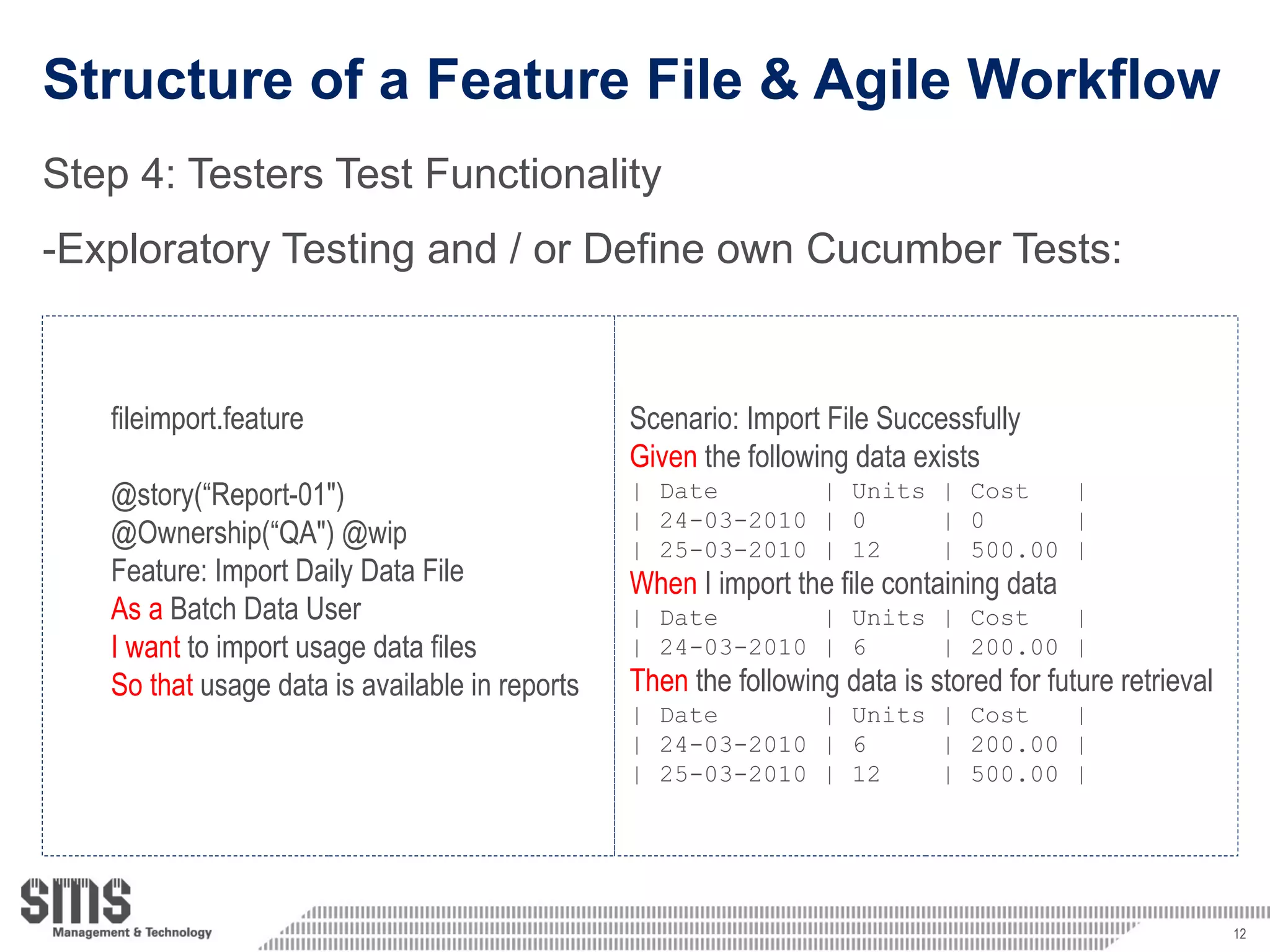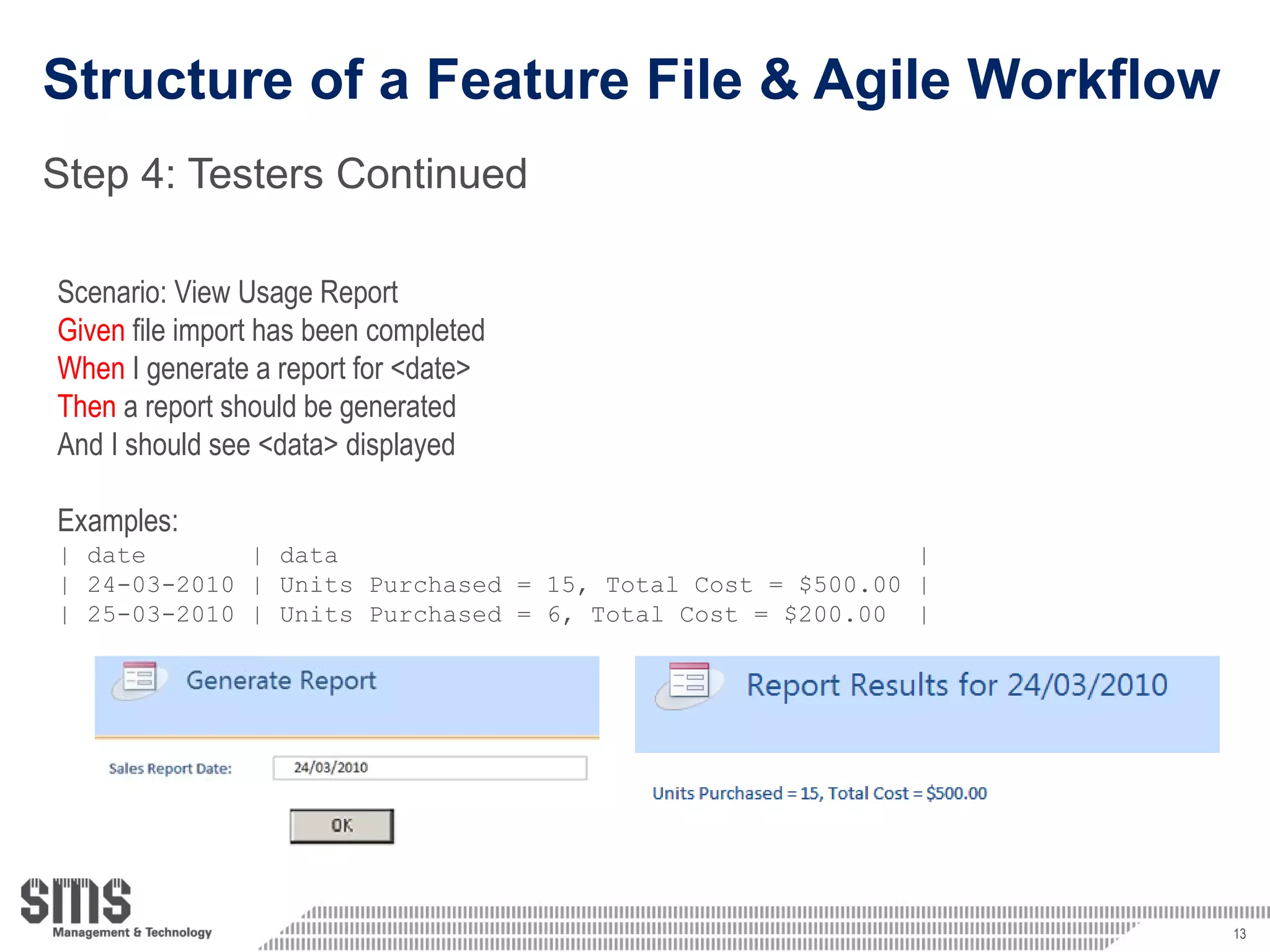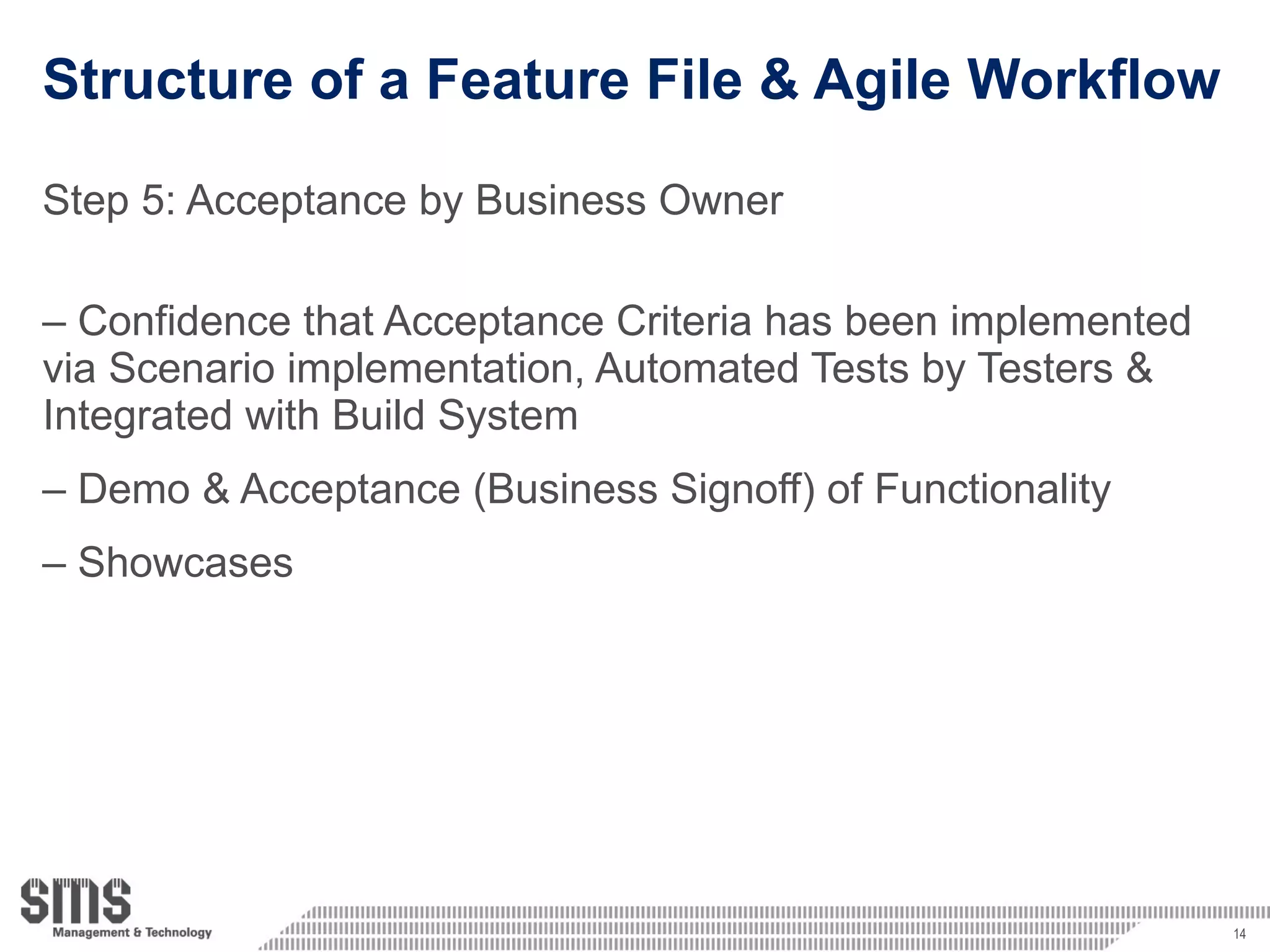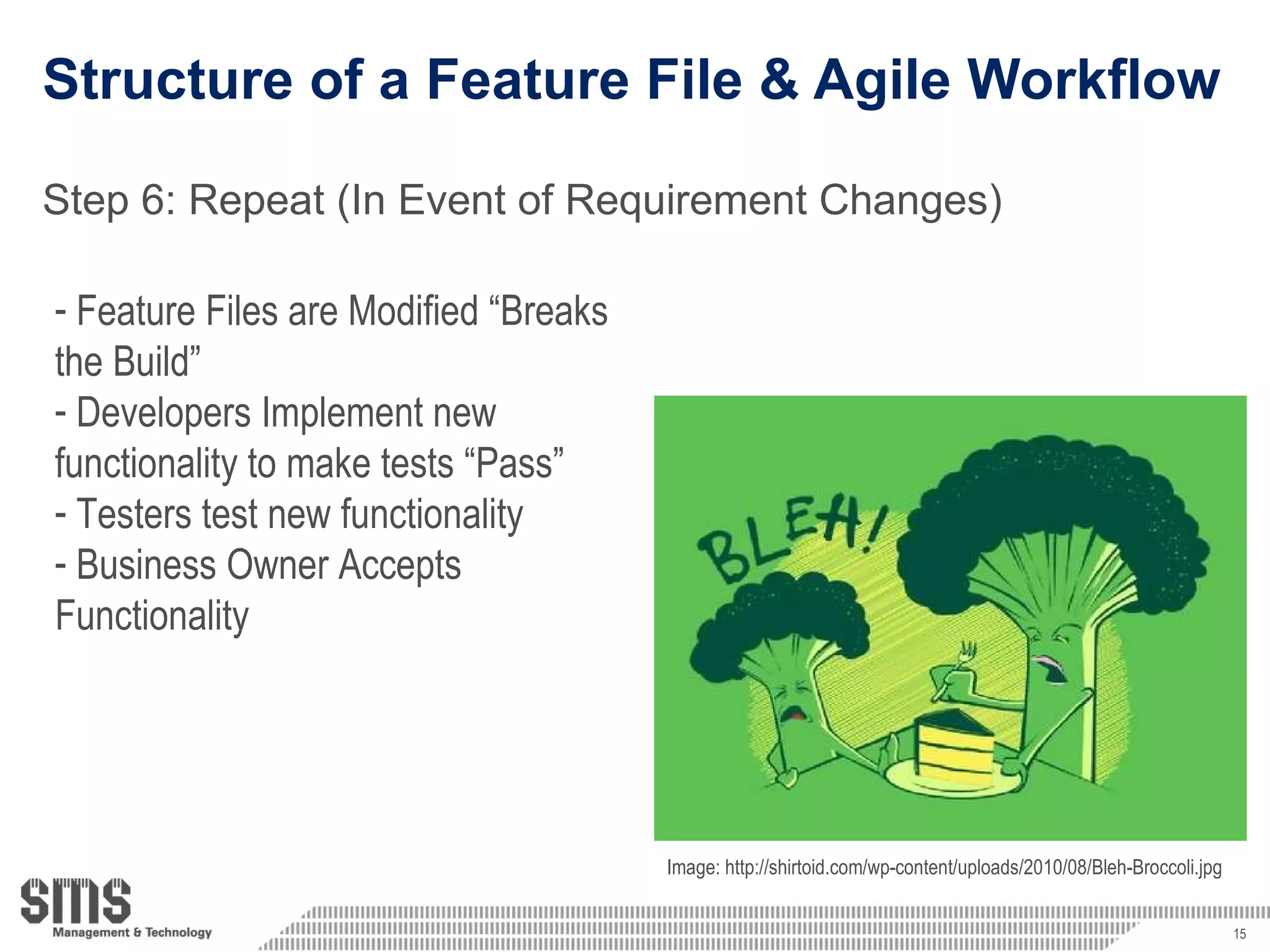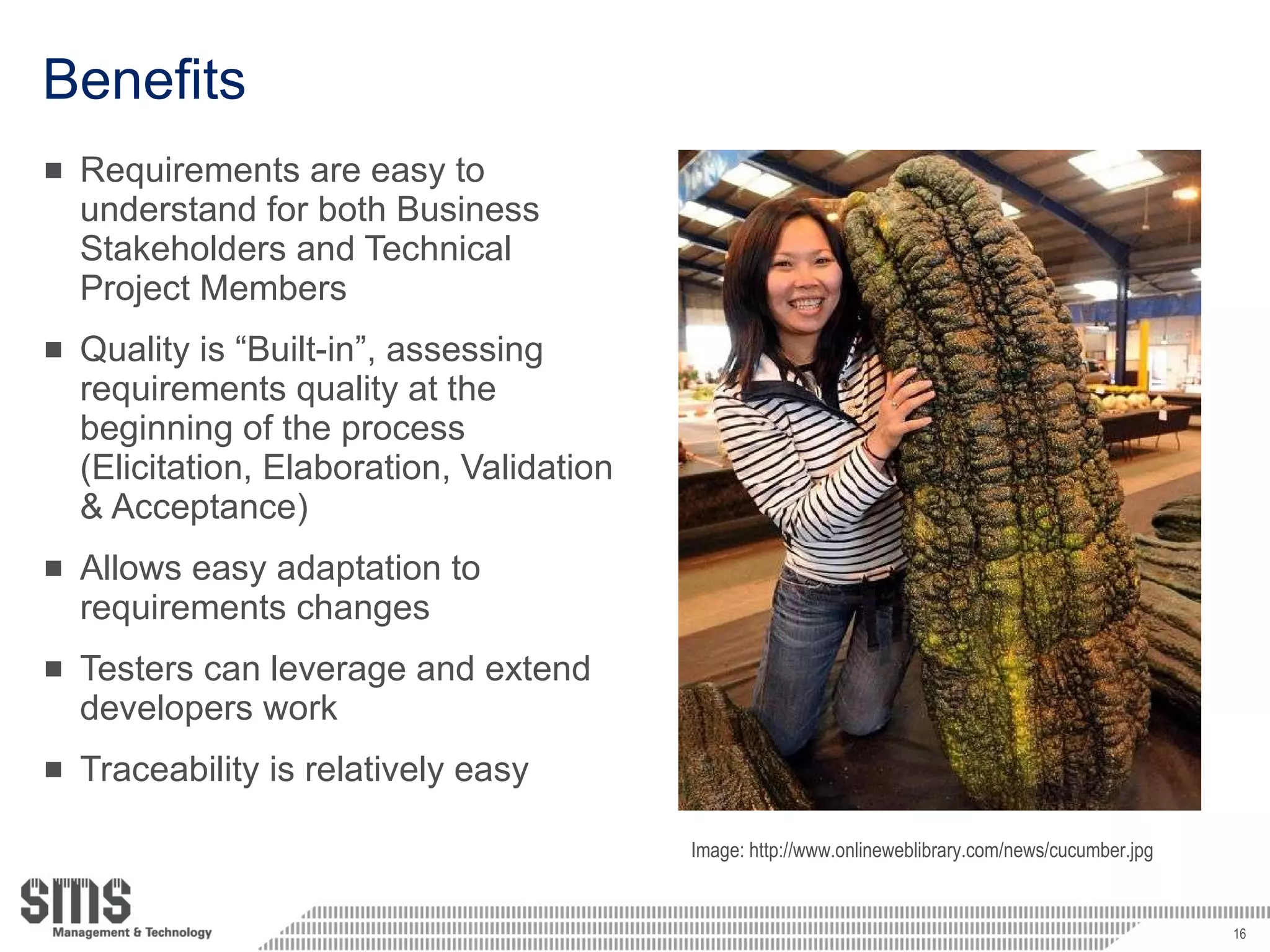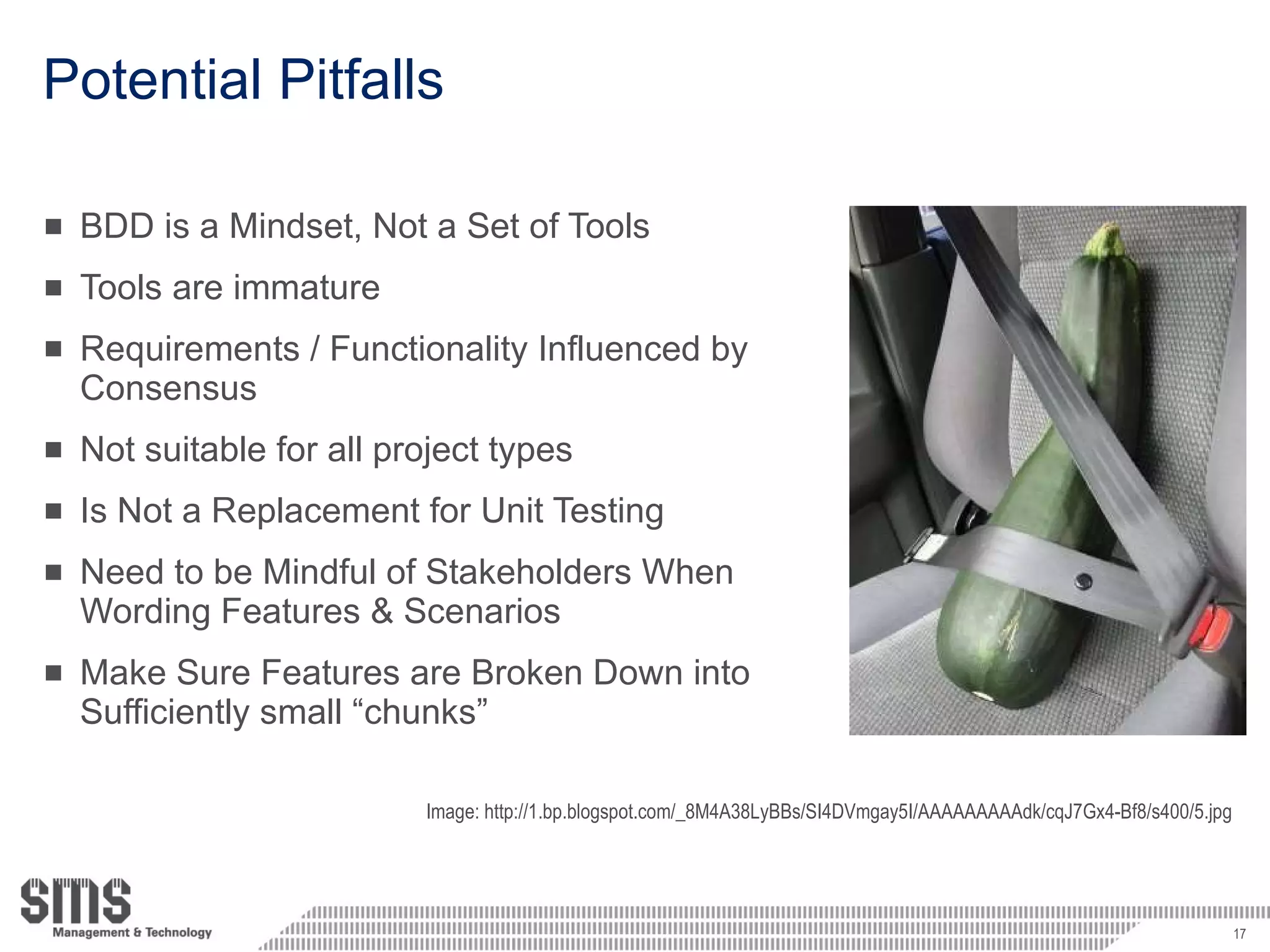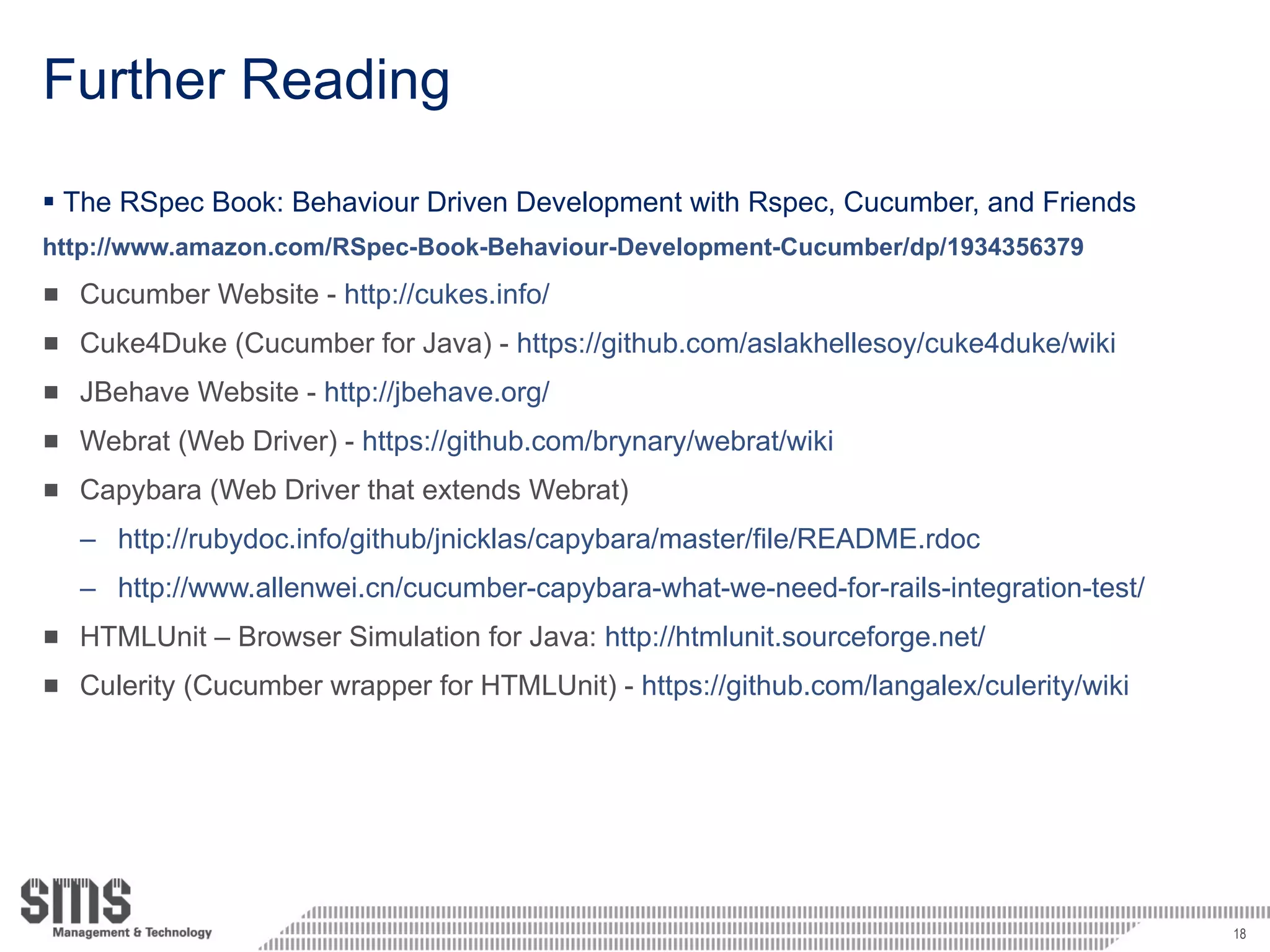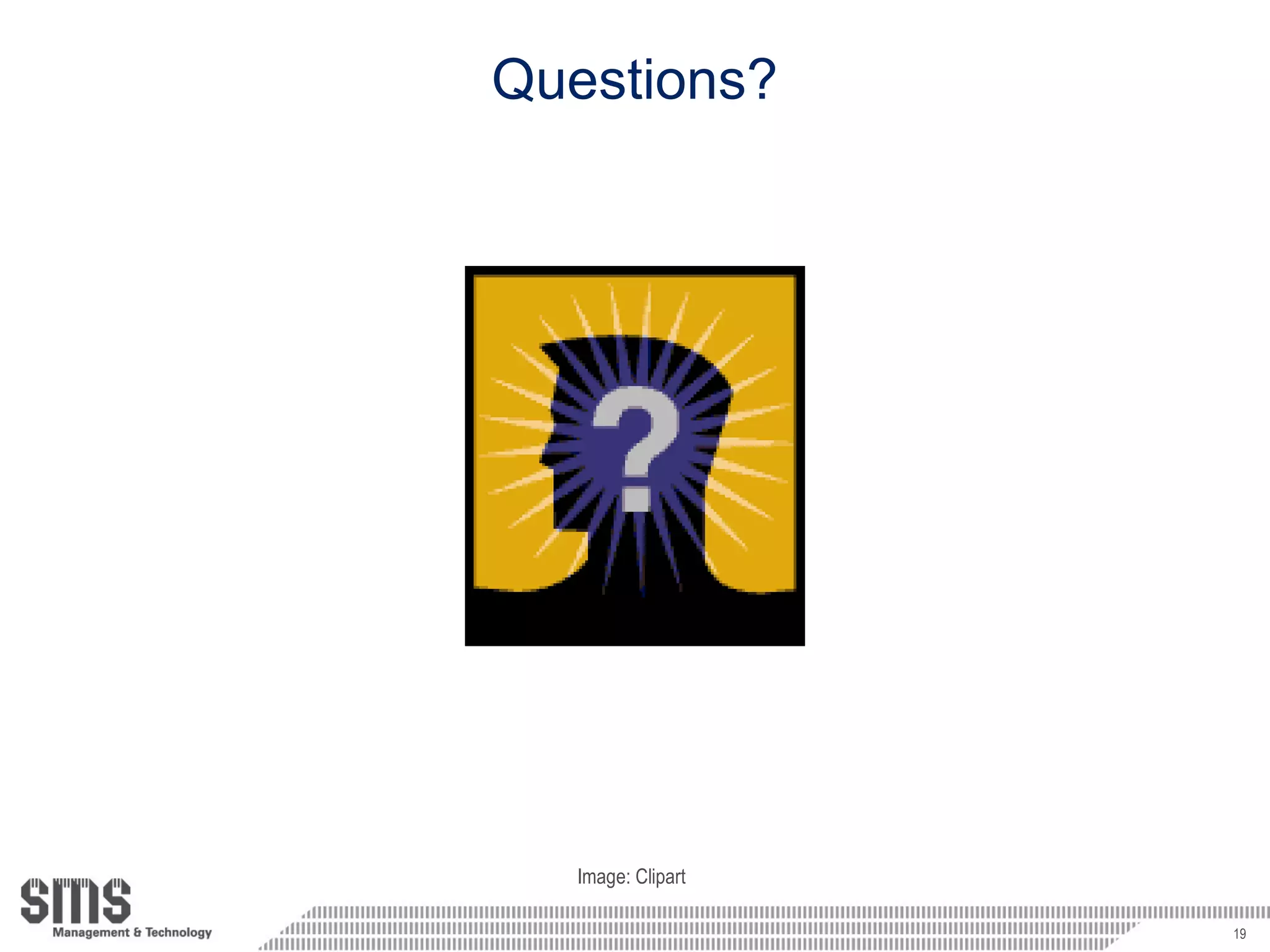The document discusses Behaviour Driven Development (BDD) and how it uses frameworks like Cucumber to define user stories and acceptance criteria in a structured format known as feature files. This allows for collaboration between stakeholders and helps ensure quality by building tests into the requirements process from the start. Feature files also provide traceability and make adapting to changes easier.
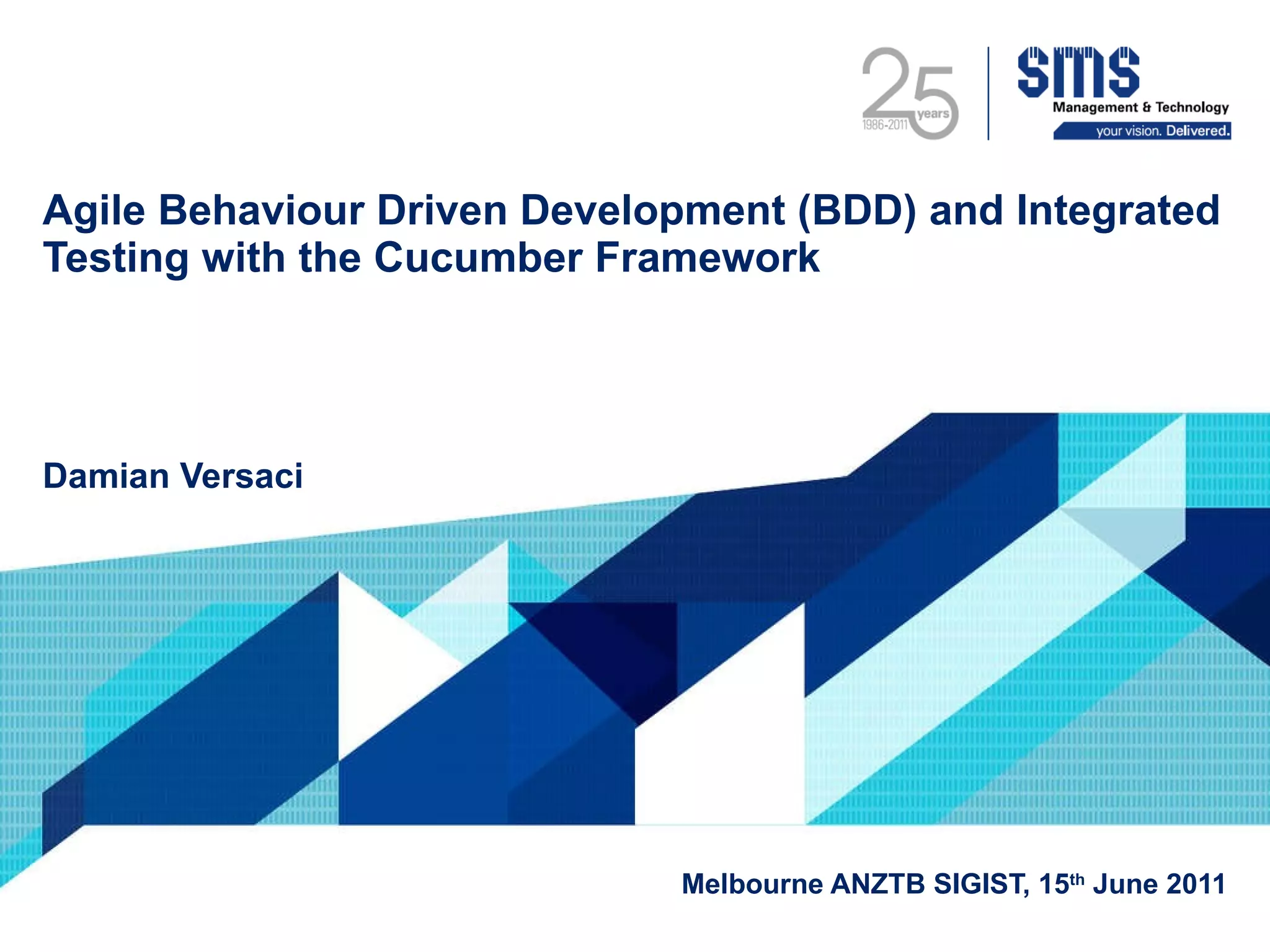
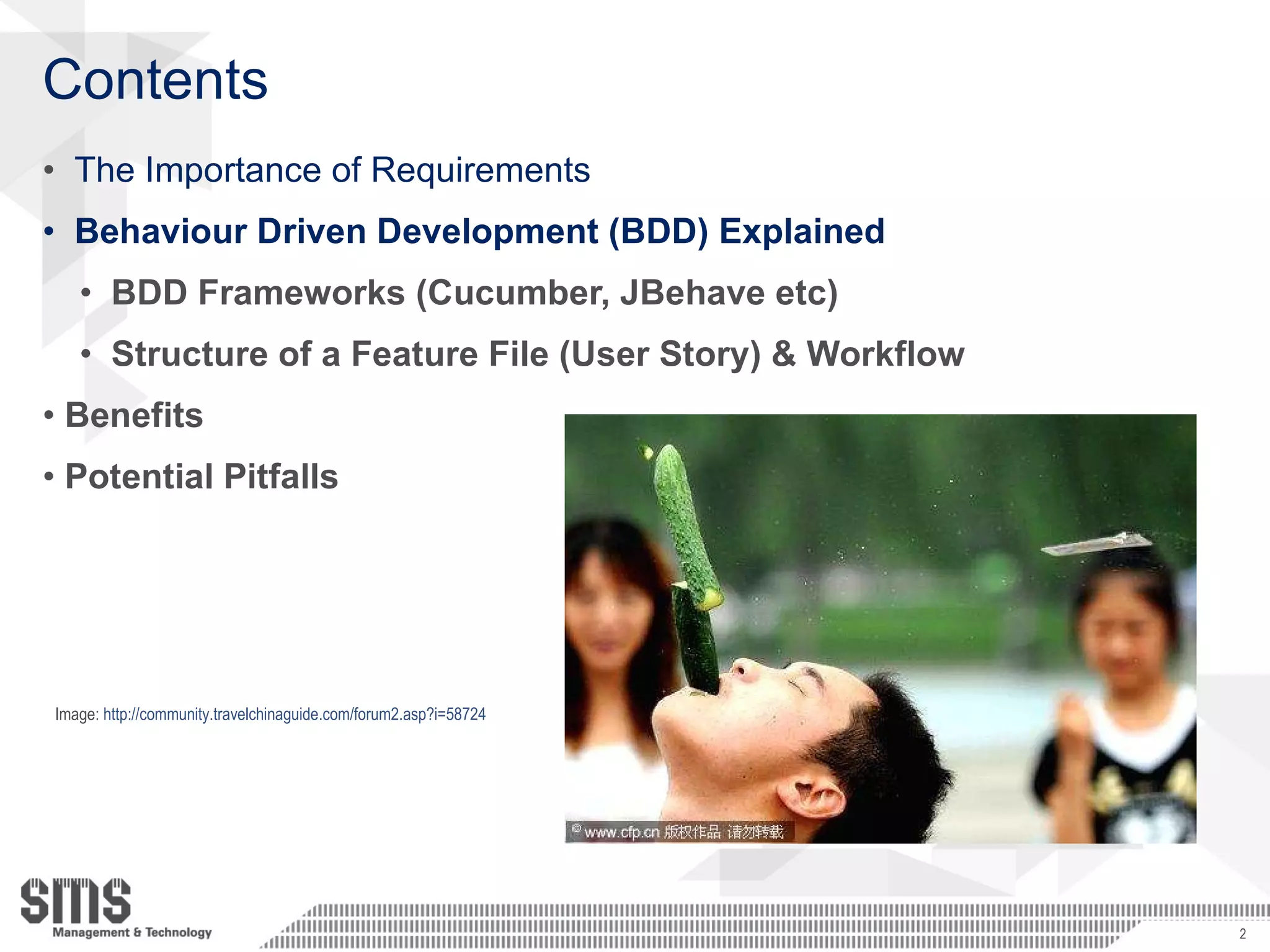
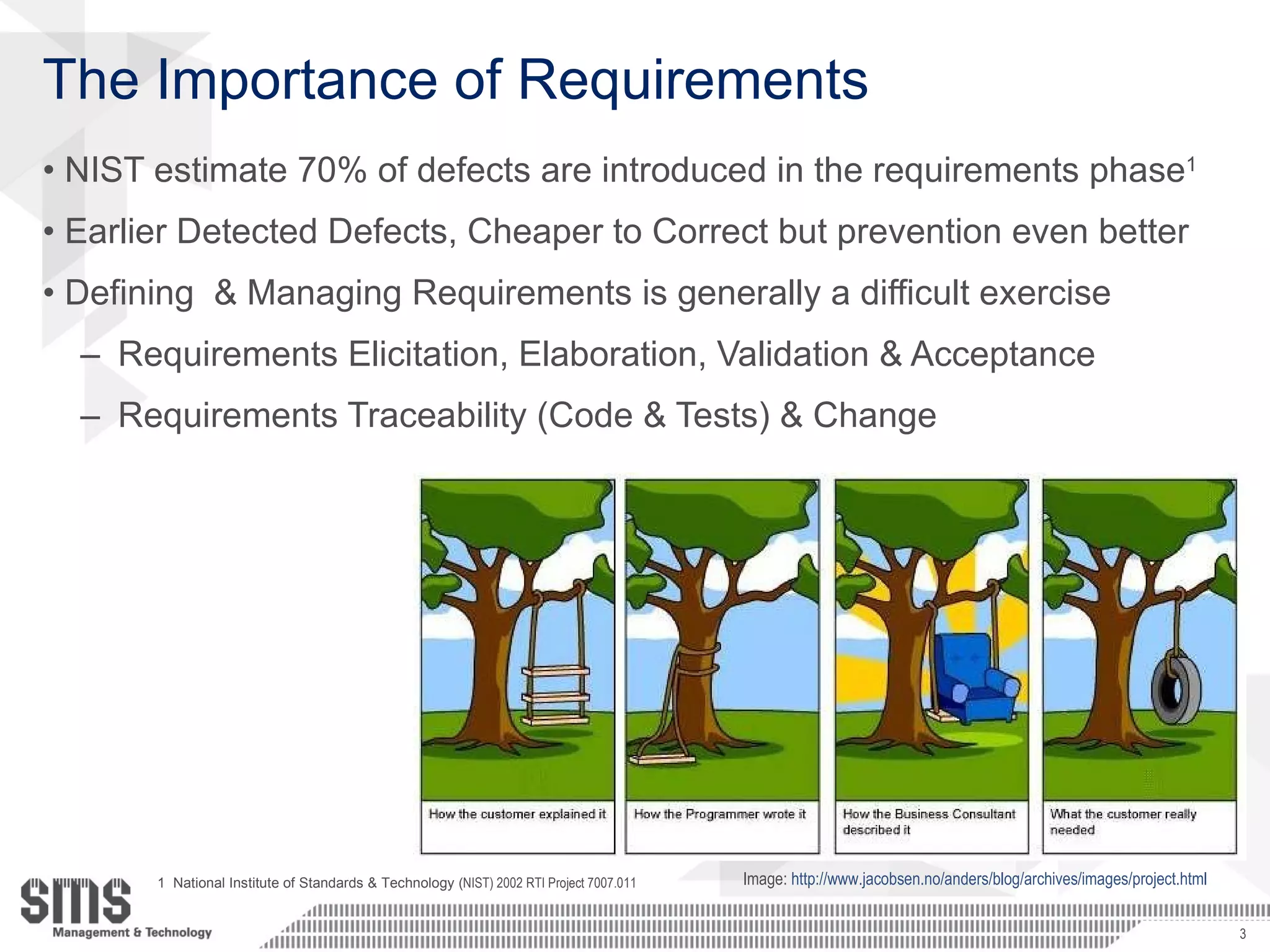
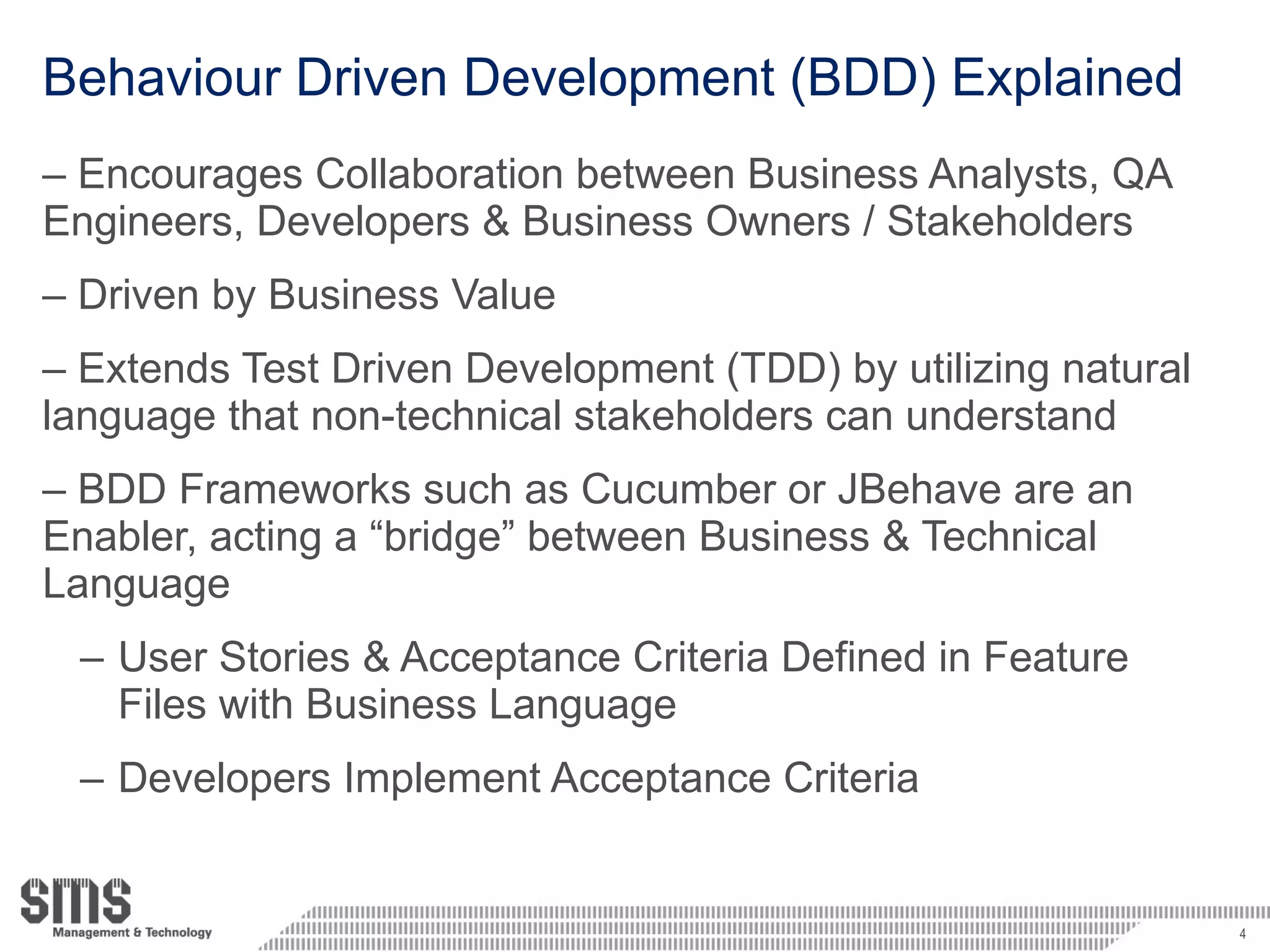
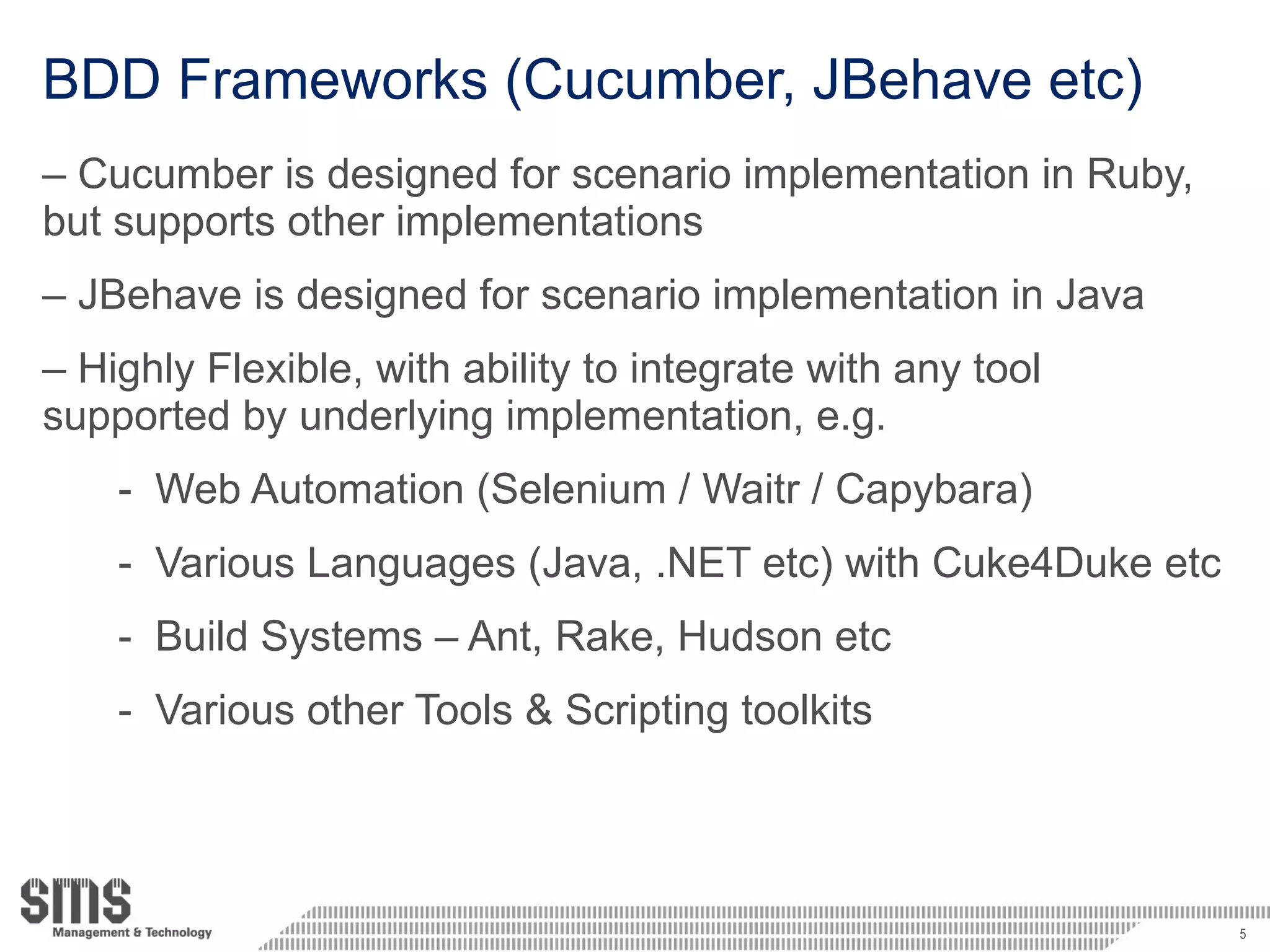
![BDD Frameworks Basic .feature (User Story) Structure: Feature: [Title] As a [Role] I want [Some Action] So that [Business Value] Scenario: Title Given [Context] And [More Context] When (I do) [Action] And [Other Action] Then (I should see) [Outcome] And [More Outcomes] - Description of Feature - Stakeholder and/or User role Action to be taken by user. Business Value Provided Description of Scenario Preconditions of Scenario Actions taken in Scenario Outcome Expected One or more Scenarios defined](https://image.slidesharecdn.com/cucumberpresentation-anztbsigist-110720060144-phpapp02/75/Behavior-Driven-Development-BDD-and-Agile-Testing-6-2048.jpg)
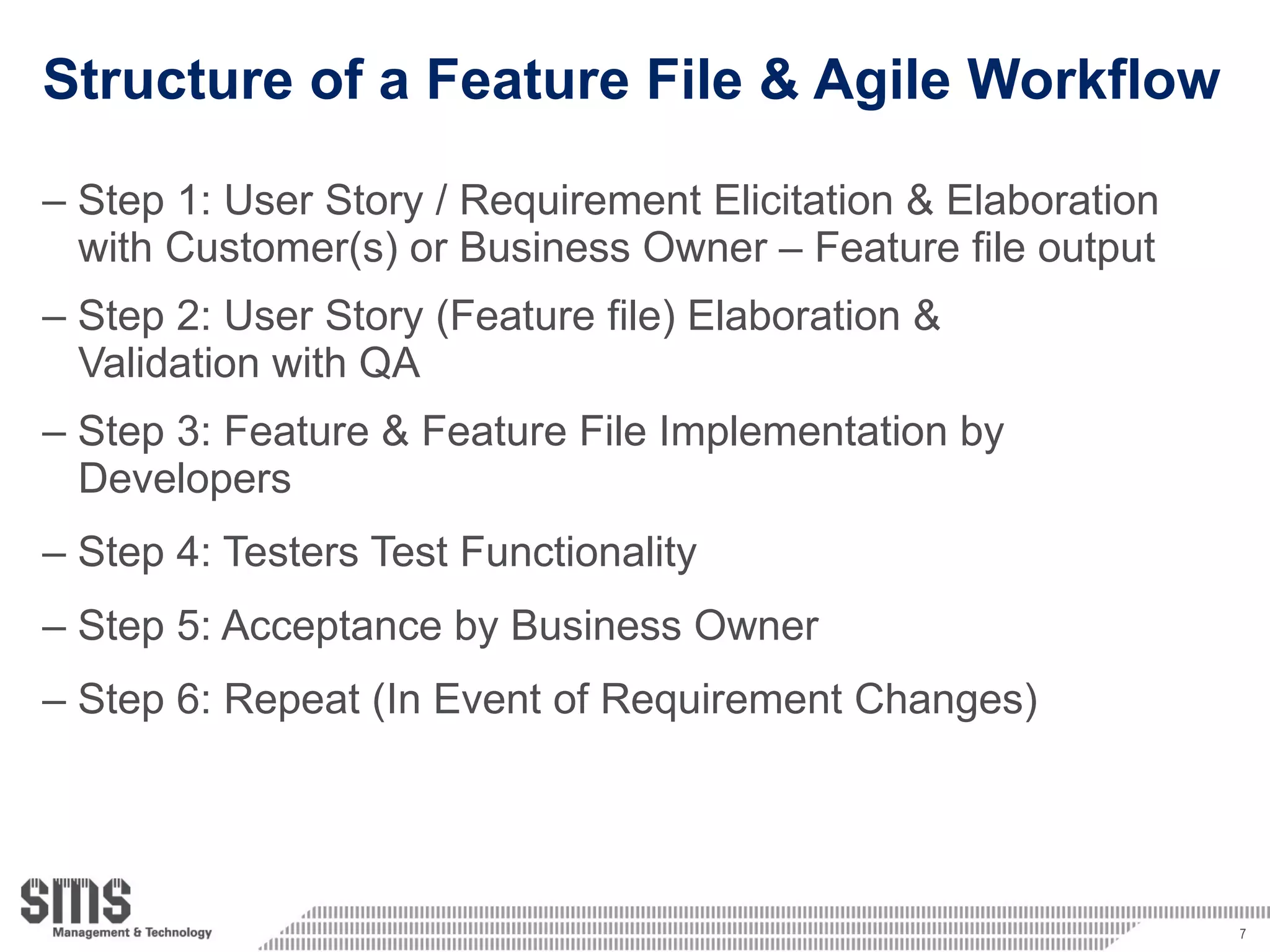
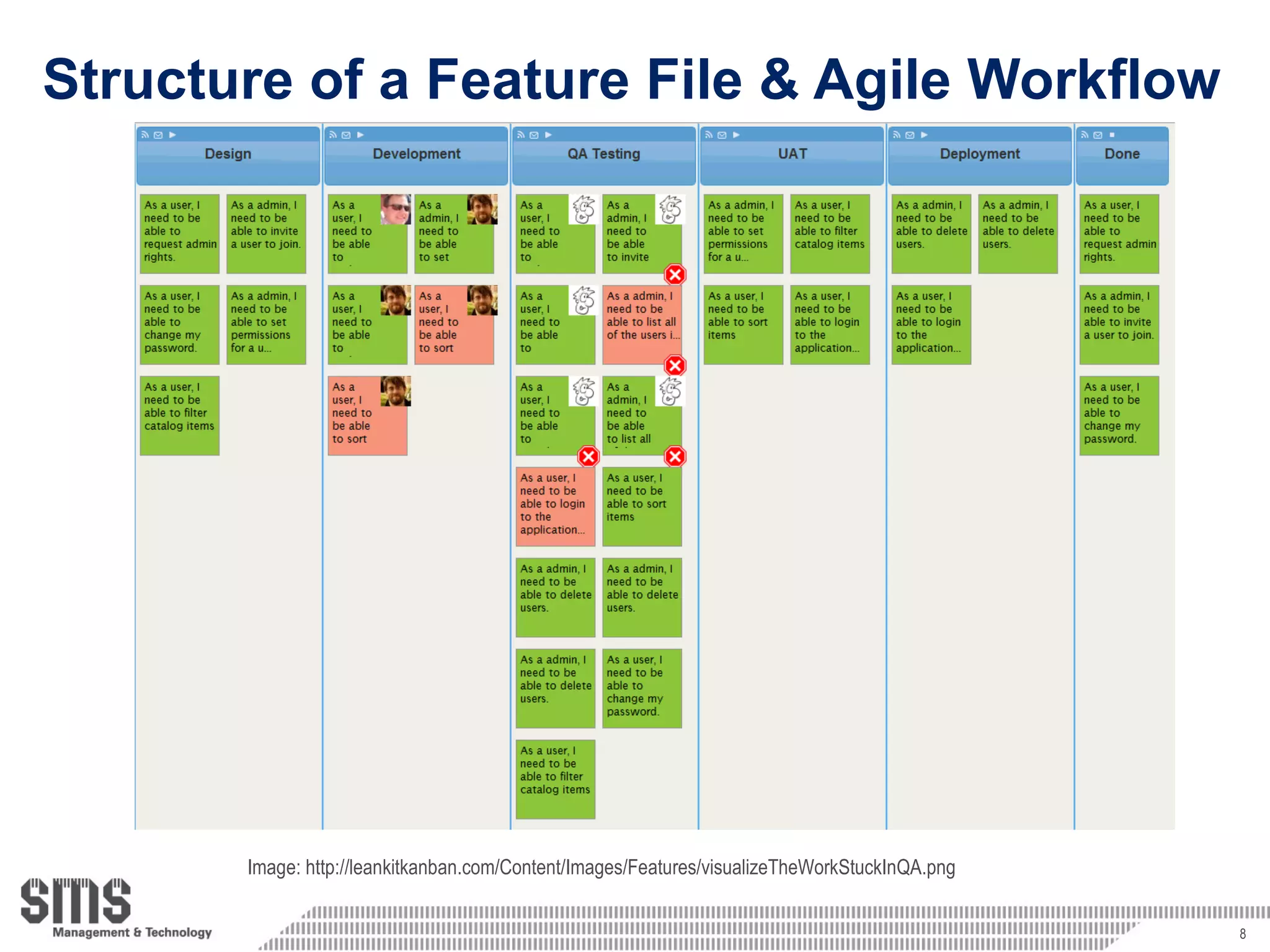
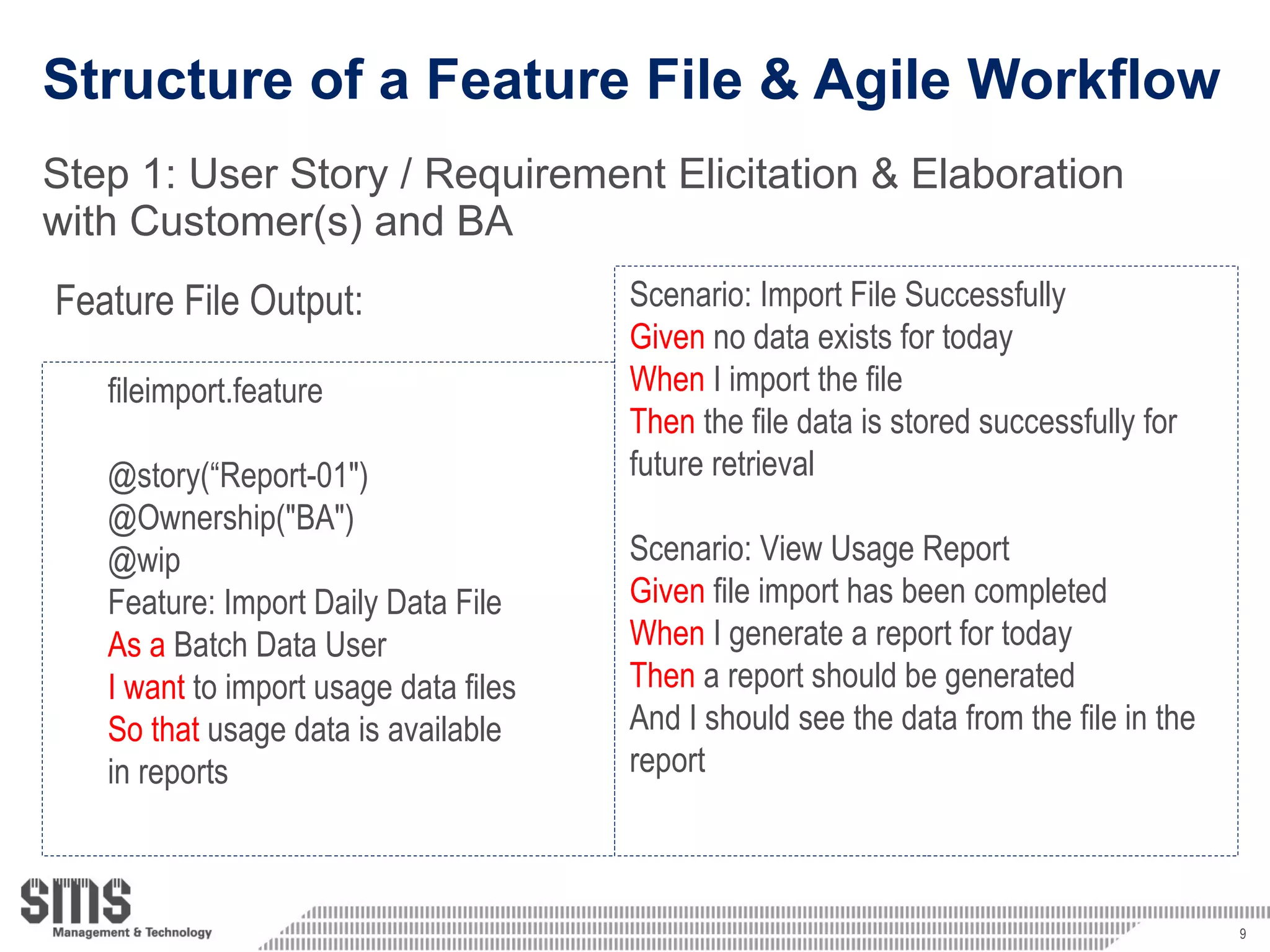
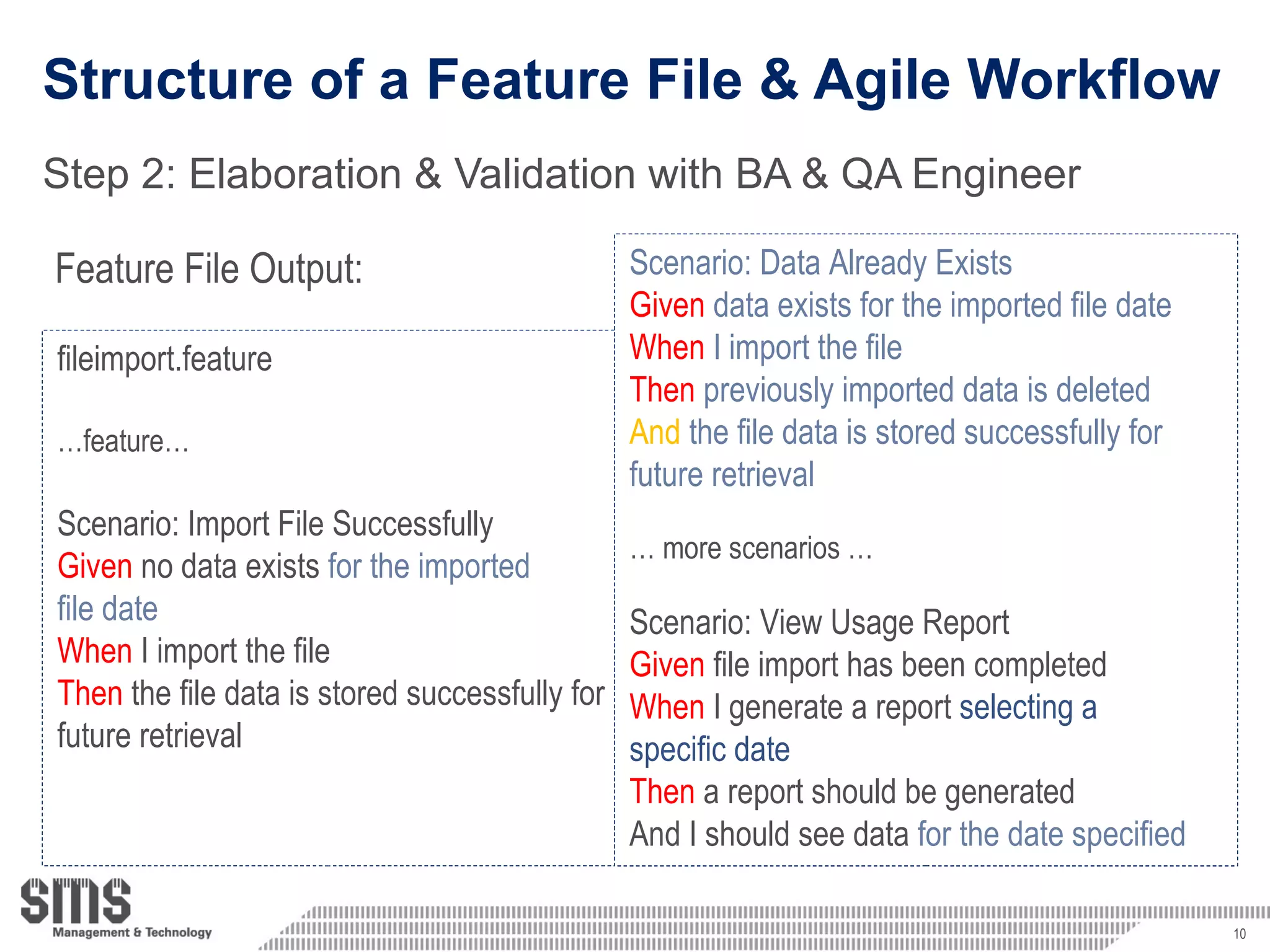
![Structure of a Feature File & Agile Workflow Step 3: Developers Implement Functionality & Scenario Acceptance Criteria FileImport.rb … Other Implementation details … Then /^I should see data for the date specified $/ do date = filefeed.date text = “Units Purchased = 15, Total Cost = $500.00” xpath="/descendant::header[@class='page'][#{page_number}]/h1" Then "I should see \"#{text}\" within path \"#{xpath}\"" end Then /^(?:|I )should see \/([^\/]*)\/(?: within path "([^"]*)")?$/ do |regexpression, xpath| regexp = Regexp.new(regexpression, {}, 'U') if page.respond_to? :should # Using Capybara Web Driver page.should have_xpath(xpath, :text => regexp) else assert page.has_xpath?(xpath, :text => regexp) end end](https://image.slidesharecdn.com/cucumberpresentation-anztbsigist-110720060144-phpapp02/75/Behavior-Driven-Development-BDD-and-Agile-Testing-11-2048.jpg)
